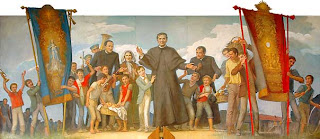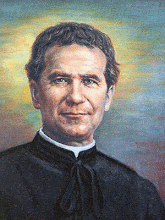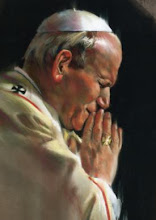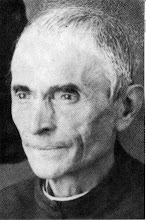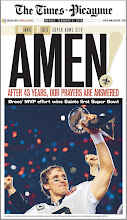The following is a story by Jason Cole from Yahoo Sports:
This is where the role of impartial journalist gives way to humanity.
Some 200 people are gathered Sunday morning at St. David’s Catholic Church on St. Claude Avenue in the Lower Ninth Ward. The church has been rebuilt in the more than four years since Hurricane Katrina hit. But for all the clean tiles, freshly painted walls and clean brick exterior, St. David’s is a shadow of its old self.

Debris inside a Lower Ninth Ward home in 2009, which had not been touched since Katrina struck. (AP Photo/Bill Haber)
Behind the church stands its former school building, which is still a windowless shell, the inside blown out by flood water. Across St. Claude toward the Mississippi River, the neighborhood is a ghost town. Just about every other house remains shuttered with plywood windows, waiting to be rebuilt or demolished.
That’s the good part of the ward, where the water hit about eight or nine feet high. Roughly a half-mile in the other direction, across Claiborne Avenue toward where levees snapped, the neighborhood is all but gone, falling under some 15 feet of water as the result of the overflow from the Mississippi River Gulf Outlet Canal.
It’s as if the houses were fallen leaves on a driveway, swept away by a giant broom. The only sign there were once homes in this part of the ward is the occasional stone slab for a foundation. Or steps that lead to nowhere but up. Or maybe a chain-link fence that still stands, surrounding nothing.
The streets are mostly a wreck. Giant potholes and divots big enough for small animals to hide in are scattered about. The roads also undulate worse than some of the damaged roofs, dipping and diving because the weight of the flood water changed the stability of the soft, sediment-based ground. Driving on some of the streets is an off-road experience.
This scene isn’t restricted to the Lower Ninth Ward. It’s repeated in places like St. Bernard Parish to the east and in Gentilly to the north, closer to now-ominous Lake Pontchartrain.
When you take it all in as you address those 200 people – many of them dressed in a New Orleans Saintsjersey for Sunday service – explaining why you’re visiting their church hours before the NFC championship game, professional objectivity is washed away. You stare at the curious faces, many of them looking worn and weary from the years of rebuilding, and there is only one thing you can say as you finish.
Go Saints!
Party time
Like so many Saints fans, Deandra and Milton Carr held a party Sunday at their home on Charbonnet Street. As 40 to 50 people gathered at their pretty brick home, complete with new cabinets and a matching hardwood floor, it was a chance to celebrate two momentous occasions.

Saints fans had plenty to cheer after their team beat the Vikings in overtime 31-28. (Jed Jacobsohn/Getty Images)
First and foremost, there was the Saints game, where New Orleans broke 43 years of frustration by beating the Minnesota Vikings 31-28 in overtime to make their first Super Bowl in franchise history.
Second, this was the Carrs’ first party in more than four years, a “house warming” of sorts, the 56-year-old Milton said. As residents of the Lower Ninth Ward for some 25 years, the Carrs used to entertain this many family and friends five or six times a year.
“I’m not a big football fan, I’m just really learning the game,” said Deandra, 54, who has a small Saints flag attached to the window of her car. She described that life here is now “tolerable.” As she spoke, she pointed to a set of cars roughly 25 yards from her front door where she suspected a drug deal was going down.
“We can’t depend on the city to help us right now,” she said. “It’s still too hard. … But [the Saints game] puts a smile on your face and helps you forget the day-to-day problems.”
“This was known as the service area of the city way back when,” Milton said. It’s the area where the maids and butlers and other people who worked on the other side of town years ago made their home. It’s about two miles around the bend of the Mississippi from the French Quarter in an area also known as the “Back-O-Town” to locals.
For the Carrs, it was a place where they were surrounded by family. Six of the nine homes on this block of Charbonnet used to house relatives. Only three of the six have family now.
Moreover, the rituals that used to bond the family are gone. Every Thursday used to be lawn-cutting day. As the men in the families returned from work, they would one-by-one grab a mower or edger or whatever other tool and pitch in to trim the yards of all six houses. When they were done, the men would gather in the carport behind the Carrs’ house and drink beer as they relaxed.
Despite the neighborhood’s reputation for crime even before Katrina, it used to look like one big-time party. From orange to pink to purple to green, the vibrantly painted homes of the Lower Ninth Ward used to reflect the splashy spirit of New Orleans. There was pride in this area because it was mostly family-owned – not an oversized rental community like so many poor neighborhoods.
After the disaster, the interesting colors that made the area unique were gone, covered in the greenish gray mud that was left after the flood. Now, the colors are slowly starting to come back.
Put the emphasis on slowly.

FEMA trailer outside a New Orleans home in December 2009, more than four years after Katrina. (AP Photo/Cheryl Gerber)
“You had to scrub that stuff off by hand and it took forever,” Milton said, describing the process of removing mud and painting over the house’s beams in order to prevent mold growth. It took him and three other men from his family four days to do one house. It was obvious they needed help.
“Some people were upset with the Hispanics who came in here to do all the work, but I’m not one of them,” said Carr, who is black. “We needed them. We didn’t have people here to do it.”
Most families in this part of town couldn’t afford to return, the challenge of rebuilding too overwhelming to consider. Throw in dishonest contractors and other scam artists said to take advantage of the situation and the frustration was too much.
Deandra said others lost their homes because of paperwork. As houses were passed from generation to generation in this area, the paperwork wasn’t always done. In the aftermath of Katrina, the city apparently claimed the property.
But mostly, it’s just too hard to come back. Some of the Carrs’ family is in Houston still, where they fled initially after the hurricane’s damage left the ward flooded for months. Some are in Dallas.
Milton is a trained electrician, a former union president at Domino Sugar and serves as a tour guide. As a fifth-generation native, Carr can talk in vivid detail about every part of the city. He used to have family everywhere around town, making mid-day pit stops an easy routine.
That’s gone, but Milton flashes an optimistic smile through it all. He is the embodiment of the sign posted on St. Claude Avenue, just as cars cross over the bridge into the ward.
“Welcome to the Lower Ninth Ward. Remember Our Past. Celebrate Our Future.”
Go Saints!
The calling
Saints quarterback Drew Brees(notes) often talks about the calling he felt when he got to New Orleans during a free agent visit in March 2006. Like coach Sean Payton, running back Reggie Bush(notes) and many other members of the team, Brees has been a beacon of hard work in a city where the job is years away from being complete.

Brees helps repair a home in the Ninth Ward in May ’07. ( AP Photo/Bill Haber)
Brees has helped reopen a school in the area and works with a group of local businessmen to come up with more ideas for rebuilding the city. He even bought a damaged home in the Garden District, he and his wife eating off folding chairs and trays for nearly two years before the house was complete. In the grand scheme of things, it was a minor frustration.
“I tried to look a lot deeper than just on the surface,” Brees said. “Coming to a team that had struggled a little bit coming off a 3-13 season [in 2005]. Obviously they had been displaced to San Antonio and played home games all over the place – Baton Rouge, San Antonio, you name it. And you’re coming back to a facility that had been used by the Coast Guard and the government as kind of a staging ground for rescue missions and everything.
“You’re looking around at a lot of the neighborhoods and there are still boats in living rooms and trucks flipped upside down on top of houses. Some houses just off the foundation and totally gone. You just say, ‘Man, what happened here? It looks like a nuclear bomb went off.’ For me, I looked at that as an opportunity. An opportunity to be part of the rebuilding process. How many people get that opportunity in their life to be a part of something like that?”
That is a noble sentiment and a wonderful rallying message. In turn, the folks in this town have taken to Brees and the high-flying Saints during this historic season. At Casamento’s Restaurant in the Garden District, five-time oyster-shucking champion Mike Rogers wears a T-shirt that says “LaBreesiana” boldly across the front. Brees’ name is everywhere, including on some religious symbols.
But the symbolism of what the Saints have done in returning here and succeeding in the aftermath of the worst natural-driven disaster in the country’s history is deeper. For a time, many people in the city thought the Saints were going to leave and even the team itself considered that an option.
Instead, the team has returned and is thriving more than it ever has. The sometimes comical days of the old Saints have been replaced by a picture of success. By something that is called super.
Father Louis Couvillon, 64, made note of that several times as he gave his sermon Sunday at St. David’s.
“We are one as a community, together pulling for the Saints. Go Saints,” Couvillion told his audience.
Afterward, Couvillion explained the bigger picture as he sees it.
“There’s a corporate identification with the Saints that people both inside and outside identify with the city,” Couvillion said. “When we see the Saints succeed, we feel as a city that we can succeed and people outside see that we can succeed. We identify with success, with rebuilding and carrying on against what nature did to this area.
“It is a symbol and just a symbol. If the Saints lose, the sun will come up the next day and the city will go on … but it has become a feel-good story for the people here. There’s a parallel between the lack of success of the team and the reputation of the city. The city has a reputation of being a loser, of being corrupt, incompetent and ineffective. People need any kind of sign or symbol that otherwise is possible.”
Go Saints!












